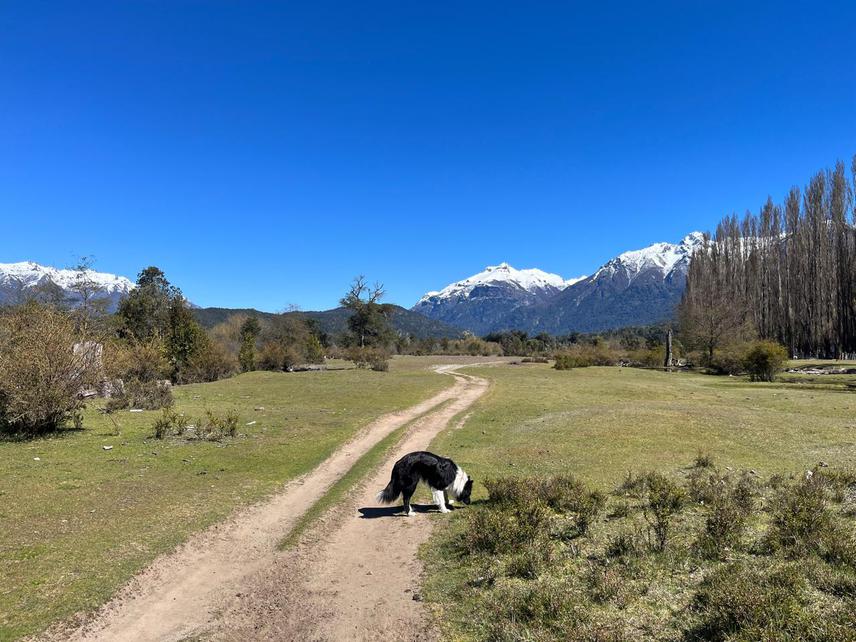Maria Laura Borsellino
With only about 1500 individuals left, the Patagonian Huemul is classified endangered by the IUCN, being also highly prioritised in both Argentina and Chile. Threats for this deer continue growing, among which dogs play a central role. Besides, the corridor is home to several other species with negative population trends, loss of habitat due to anthropic activities, and growing problems derived from contact with dogs and other human-derived threats. In particular, dogs are the main conservation threat for the near threatened Southern Pudú, eventually shaping their distribution in other suitable habitats.

El Manso landscape and one of its many shepherd dogs. ©Laura Borsellino.
In suburban and rural areas of Andean north-Patagonia most dogs are allowed to roam freely, often resulting in conflict with wildlife. This occurs both outside and within natural protected areas under the jurisdiction of the National Parks Administration of Argentina, where the Regulation for Ownership of Dogs, Cats and Other Domestic Animals has been little effective in reducing these conflicts. Therefore, working along with inhabitants to understand how they care and manage their domestic animals and the potential threats to wildlife they represent is an opportunity to engage human communities in wildlife protection and responsible ownership, complementing law enforcement.

River “El Manso” in Río Negro, Patagonia, its mountains and free roaming dogs. ©Laura Borsellino.
Our main goal with this project is to generate and put into effect collective, integrated and multidisciplinary actions for the management of dogs in a key biological corridor for endangered wildlife in Andean north-Patagonia. Focal species include the Southern Pudu, Guiña cat, Southern river otter, relictual forest marsupials, geese and, especially, the Patagonian Huemul. The corridor includes several protected areas in contact with productive land and towns, where wildlife is frequently attacked or killed by dogs. We aim to raise awareness on this problem among the local inhabitants and to foster coordinated work involving the community, local experts and decision makers, to reduce this threat.
Header: Typical mixed bred shepherd dog of our study site in it’s home surrounding area. ©Laura Borsellino.